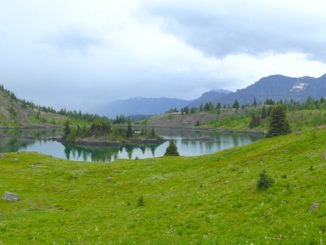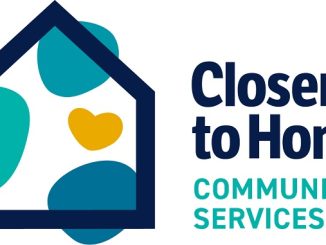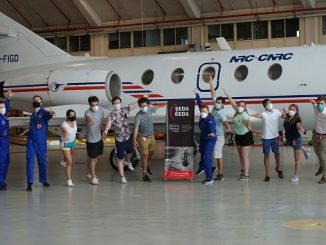“Volunteers are not paid – not because they are worthless, but because they are priceless.”
The newest feature in this Wild Jobs series looks at the dedicated work of volunteers with the Friends of Kananaskis organization. I had the pleasure of interviewing Derek Ryder, a ten-year veteran with the Friends who has held numerous positions including Director at Large, Director of Communications, Board Co-Chair, and sole Chair. Currently, Derek is back in the position of Co-Chair, a role he really enjoys.
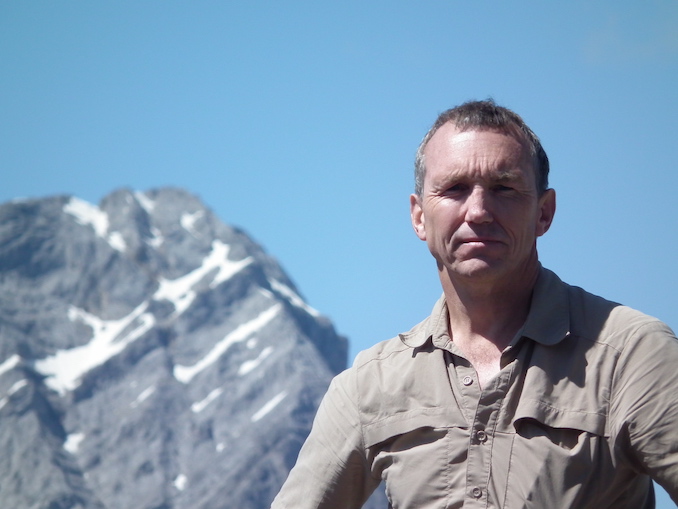
Starting back in 2012, when he was Director of Communications, Derek created and managed the Friends monthly newsletter. With Derek at the helm, subscribers jumped from about 150 to over 1,000 today. Derek still gets out in the dirt with trail crews as well, either in a leadership role on trail care days or simply as a volunteer, helping build and maintain K-Country’s extensive trail network. In addition to all of that, Derek also created and delivers a trail design and construction workshop every autumn for Grade 7 Leadership students from the Banff Public School through the Canadian Rockies Outdoor Learning Centre. As you can see, Derek is very committed to preserving, protecting, and improving the group of parks and recreation areas that make-up Kananaskis Country.
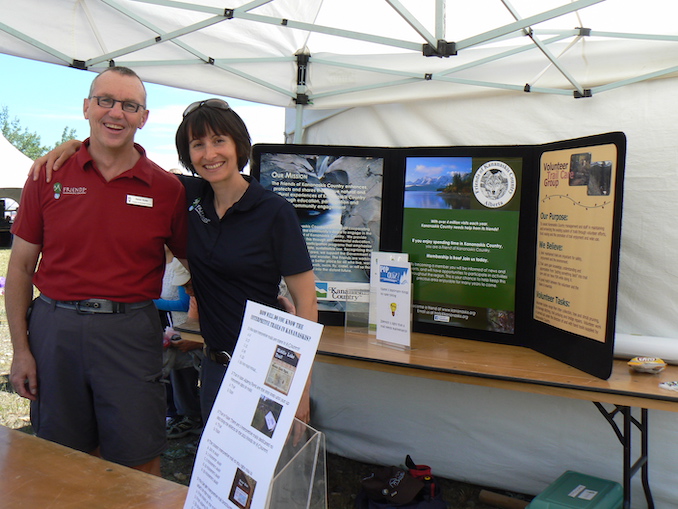
In addition to his work with the Friends, Derek is also actively involved in other volunteer initiatives within the Bow Valley. He’s a Bow Valley Steward with Alberta Parks, a Wildlife Ambassador, which is a joint venture between Alberta Parks and Bow Valley Wildsmart, and he’s also a SnowHost at Sunshine Village. Good thing he’s retired, because I’m sure all of that would equal more than a full-time job! Now, without further adieu, here’s the in-depth interview with Derek Ryder, a dedicated volunteer.
Calgary Guardian: “This series is about Wild Jobs. What is your job, and what makes it wild?”
Derek Ryder: “I’m the Co-Chair of the Friends of Kananaskis, which is the largest volunteer organization working with the government in Alberta. It’s also a registered non-profit charitable organization, and 100% of our funding comes from either grants or donations. We have three paid people who combine to be about two full-time staff. Nancy Ouimet is our Executive Director, Tim Johnston is her part-time Program Manager, and Sachi Kitazaki is our Contract Bookeeper. Everyone else in the organization, all 2,000 of them, are volunteers, including me. What makes my job ‘wild’ is that, not only do we work in the wilderness on things like trails, but managing a volunteer organization is dramatically different than managing a conventional organization, more so when you do it as a volunteer.”
CG: “What made you want to take on the jobs you have with the Friends?”
DR: “Well, I started by putting up my hand to help build and maintain trails, because I love my K-Country trails, and knew some that could use help. I then put up my hand to learn and become a Trail Crew Leader with the Friends, as the whole idea of how to build a sustainable trail that would need less maintenances was intriguing to me; I started to learn about trail design and construction methodologies, and got a kick out of helping teach these ideas to others. It was by happenstance that I attended the Friends AGM in 2012. I have learned since that no one actually attends the Friends AGM if they don’t have to! I listened to the ‘State of the Union’ and it really wasn’t good. The Friends organization had many serious issues: financial, managerial, and personnel. I had just retired from 30+ years in the oil and gas industry, many of those years in senior managerial positions. I thought my combination of skills could help turn the Friends around; it was an organization that was going to be out of business very quickly without substantive change. The first few years was a LOT of work, but we were successful, and today the Friends is thriving. In 2012, we had less than 250 members, of which 100 or so were active; now we have 2,000, and almost 600 come out to do field work each year. One of the first things I did in 2012 in order to help ‘right the ship’ was to engage with members better. I drew on years of experience I had with other organizations and took on the role of Director of Communications. I took over the newsletter, which was only published ‘occasionally’, and committed to making it a monthly publication. Since then, I’ve written the majority of the content and published 87 newsletters. Now we have over 1,000 subscribers and over 600 readers who, on average, open the newsletter three times each.”
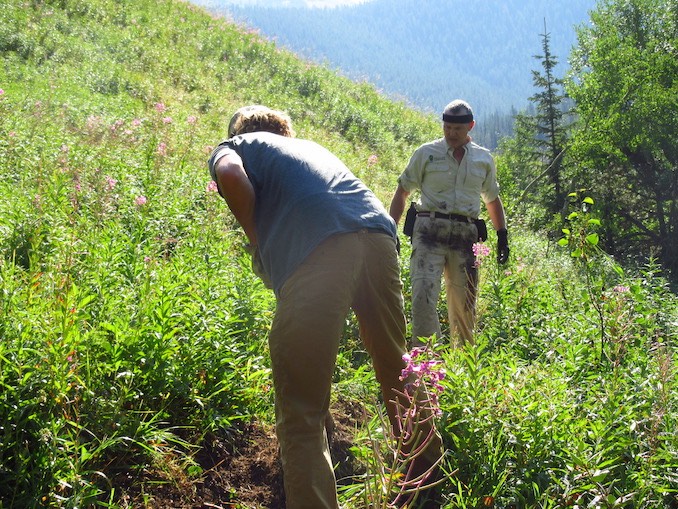
CG: “What is FOK? What do the Friends do as an organization?”
DR: “Our Mission is ‘Building a community of volunteers and partners to maintain the ecological integrity and recreational use of Kananaskis Country by engaging in trail care, stewardship, education, and research.’ We support Alberta Environment and Parks in engaging the public and volunteers with K-Country, primarily through trails. Some three million people visit K-Country each year, and the vast majority of those use trails in some way. Those trails don’t exist by magic, and there are no such things as ‘Trail Fairies’ to take care of them. We work closely with Alberta Parks’ phenomenal trail staff on park lands, and with Public Lands folks there. I’m pretty sure people don’t realize how few staff are there to build and maintain trails; Public Lands, for instance, basically doesn’t have any at all. Parks has about 10 to manage their 1,200 km of official trails. So we bring our army of members to help them, swinging pulaskis and Macleods. But we do more than that. In the area of Education, for instance, we are in partnership with Alberta Parks on delivering educational talks. The Friends delivers a free winter Speaker Series in Calgary, and Parks delivers a summer and fall series in Peter Lougheed Provincial Park. We are also in partnership with Parks on the reimagining of the suite of interpretive trails in K-Country. Folks may have seen new signage at places like Rawson Lake, Elbow Falls, or Heart Creek. And we build community, too. We created and manage the Canmore Trail Alliance, an umbrella organization for various trail user groups in the Bow Valley corridor to work together in this area. We partnered with groups like the Greater Bragg Creek Trails Association, the Great Divide Trail Association, the Moose Mountain Trail Bike Society, and the Calgary Mountain Bike Alliance to standardize regional training and health and safety for trail builders.”
CG: “How long has FOK been around? How has the organization changed over the years?”
DR: “July 2016 marked the 20th Anniversary of the Friends. It was originally created by one of K-Country’s original Park Planners, Don Cockerton, who had the foresight to see that engaging the public in the stewardship of K-Country was key to its success. Don remains involved with the Friends even today, long after he retired from Alberta Parks. Today, written into every Management Plan for the various parks in K-Country, you’ll find a reference to the role of the Friends. The Friends has morphed a lot over the years, though trail care has always been a central focus, and has been part of us every year we’ve been in existence. Some things the Friends have done in the past, but no longer do or are involved with include: selling backcountry camping permits on behalf of Alberta Parks. Managing the Memorial Bench program in K-Country. Many people have seen the benches scattered around with brass plaques on them; you used to get those through us. We delivered educational programs for the Elbow Valley Watershed Partnership. There also used to be retail outlets in four visitor centres, and we ran them and staffed them with volunteers.”
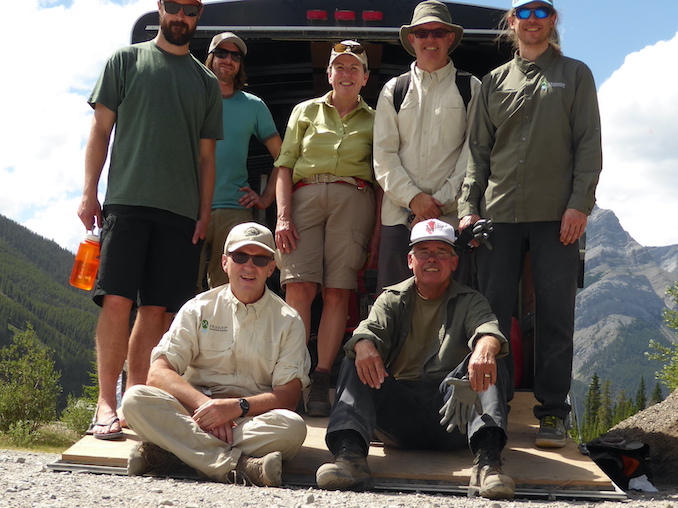
CG: “What are some of the projects you’ve worked on? What’s the most memorable one?”
DR: “It’s hard to name an official trail in K-Country the Friends hasn’t helped Parks or Public Lands with in the last eight years. Ptarmigan Cirque, Heart Creek, Galatea, Ribbon Creek, Rawson Lake, Tom Snow, several in Sawmill; Chester, Hidden Lake, Upper K Circuit, Guinn’s Pass, Canyon, Quaite Valley, Razor’s Edge, Jewell Pass, Powderface, Jumpingpound, Cat Creek, Picklejar Lakes, Prairie Creek, …the list is VERY long. Because we’ve done so many, and I’ve helped with most, they’re all memorable. But any post-2013 flood restoration work has to stand out. The level of destruction was so mind-boggling that I co-authored a book about it with Gillean Daffern as a fundraising project for the Friends. You can still buy it on Amazon (hint, hint)!”
CG: “What’s the best part of volunteering with FOK?”
DR: “A couple always stand out for me, and they resonate with our members when we survey them. First, is a sense of pride and accomplishment. It can be hard work, but EVERY time you walk a bit of trail you helped create, you point at it and say ‘I did that’ or ‘I helped build that’. Second, is that feeling of giving back. It doesn’t cost anyone a penny to come to K-Country and go for a hike, a mountain bike, a snowshoe. or a ski. Folks want to say THANK YOU to someone for the wonder they get from being out there. Helping take care of it and enable present and future generations to get the same enjoyment they did is a big deal. Third, is a sense of camaraderie. Friends members and volunteers LOVE trails, LOVE giving back, and LOVE getting dirty while doing it. Any time you’re around a group of people with a common interest, it’s pretty fulfilling.”
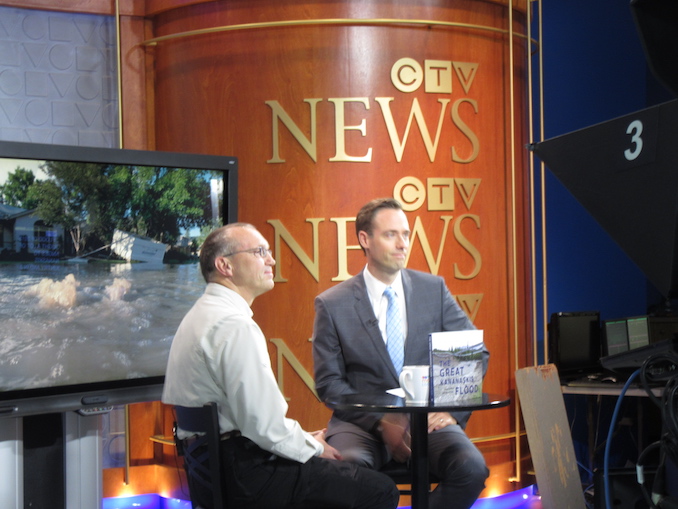
CG: “What’s one of the most challenging aspects in your role as a volunteer?”
DR: “Just physically being out building trails, the biggest challenge for most who start out is the worry they’ll do something ‘wrong’ or won’t know what they’re doing. The best part is, we train, we create safe environments with well-planned-out work, and it can be hard work, but it’s still dead easy. There’s little you can do with the hand tools we give you that can’t be fixed easily if you make a mistake. And we’re a hand tool organization; no chainsaws, no trenchers, no nothing. A few minutes of instruction, a few minutes of mentorship, and you too could be out there building trails. As Co-Chair, that’s completely different. We have an organization to run, and everyone in it, save for our three paid positions, is a volunteer. That creates a very different dynamic than a ‘traditional’ organization. Now that we’re on stable ground, and now that we have a solid community of enthusiastic participants, the area we constantly struggle with is funding. All of our money comes from grants or donations. It only costs about $120,000 per year to fund what we deliver, but we have to find that money each year. The Board will freely admit we lack strength in fundraising. Our Executive Director Nancy does a great job in this area, and our fall Trail Love – Give Back fundraiser was super successful this year in raising just over $14,000. In February 2020, we’ll be announcing an exciting new program in partnership with the Calgary Foundation.”
CG: “You mention that managing a volunteer organization is different than a conventional one. How so?”
DR: “There are many differences. In a conventional organization, for instance, you can basically be told to do something by your boss even if you don’t want to do it. You may not be a fan of your co-workers, but you come to work anyway. For some, coming to work is felt as an obligation to get that pay check, which they can’t live without. There is often competition within the organization, comparing performance from one person to another. And while there are always budgetary restrictions, there is always a budget. None of that is true in a volunteer, non-profit organization. Volunteers put their hands up to do what they want and what they’re passionate about, and normally don’t care that much about what they’re ‘told’ to do. If they’re ‘told’ to do something they don’t want to do, they just walk away and not only don’t do it, you tend to lose them as volunteers. Volunteers almost never do things they don’t see as fun, and if they don’t feel welcomed and part of the team, they won’t come back. No one in a volunteer organization feels ‘obligated’ to do anything, and they sure don’t HAVE to be there. Some volunteers find friendly competition good; others find it stressful, because they deal with that in their real jobs. And our little non-profit basically has no budget for anything. So the job of managing a volunteer organization is all about engaging with people who want to be there, and enabling them to do what they want to do. It’s about finding and building a community of like-minded people who see the same end-goal as each other, and want to work together and celebrate the group’s accomplishments.”
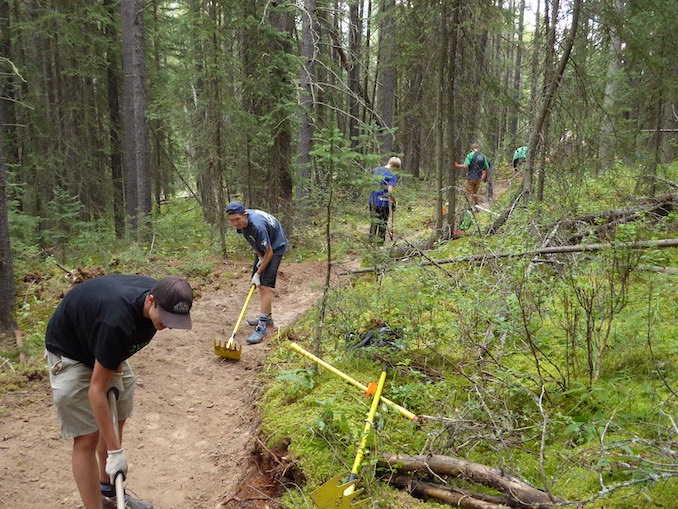
CG: “I’m not asking you to give away any of your secret spots, but what’s your favourite area of Kananaskis? What makes it so special to you?”
DR: “I have too many, but all of them share the same characteristic: any time I want, I can basically have them to myself. Lots of places in K-Country are popular, and rightly so, and there’s nothing wrong with popular. But the vast majority of K-Country is under-explored, and solitude and wilderness and critters and awe and wonder are readily found. I urge people to quit chasing the ‘Gram photo, stop doing their ‘research’ on social media, and not be influenced by ‘influencers’. Instead, get a good guidebook, like, say, the ones written by Gillean Daffern, and go explore.”
CG: “What sets FOK apart from other similar volunteer organizations in the province?”
DR: “We’re huge; at almost 2,000 members, we’re one of the largest volunteer organizations in the province. We’re complex; we have Cooperating Agreements that control what we do and how we work, and we don’t just have one, we have three of them, including one with Parks division and a separate one with Public Lands division. We’re provincial leaders in many areas, including Health and Safety and Training. And while we clearly don’t put in as many hours annually as some organizations, we have a huge diversity of work that we do; no two trail care days are ever the same.”
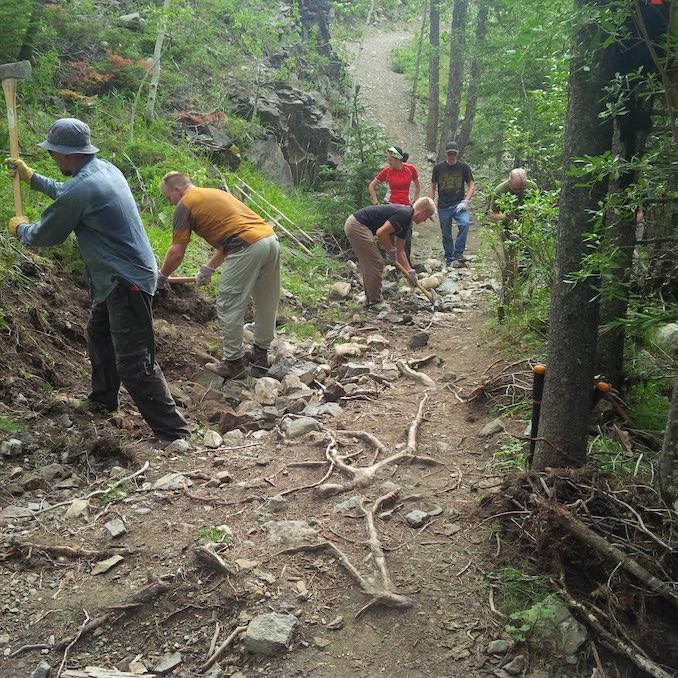
CG: “Assuming there are opportunities, how can people get involved with FOK?”
DR: “That’s easy, and we’re ALWAYS looking for volunteers and people willing to get out into the field and swing a Rogue Hoe. Just head to our website and sign-up to join our mailing list and get on our Newsletter distribution list. We promise NEVER to spam you; our bylaws even prevent the sharing of our membership list with anyone else. You’ll get regular updates about upcoming events, and we use the Provincial Better Impact website to post our work days, which can happen any day of the week. We start in May with our annual highway clean-up, and work all the way through the summer, with the core of our trail care work between mid-August and early October. And we’re always looking for Board members as well, especially those with a background in Finance, Fundraising, HR, and Communications.”
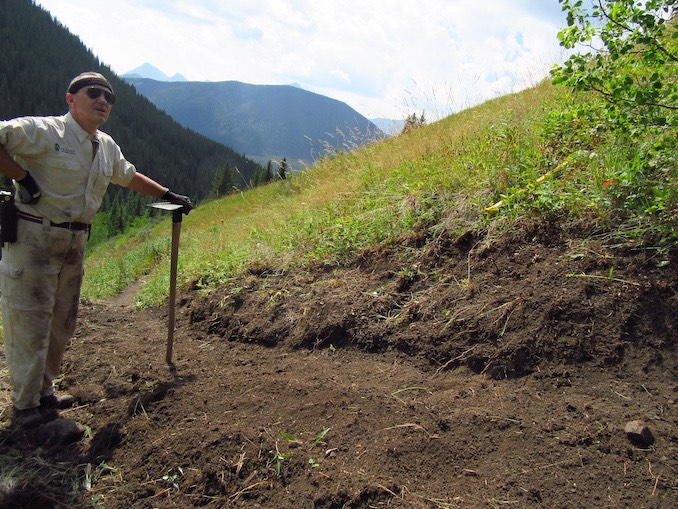
I really appreciate Derek taking the time to answer all of my questions and for collaborating on this interview with me. It’s nice to gain the perspective from a volunteer whose boots are on the ground in one of the busiest provincial parks in the province. So, thank you for agreeing to this Derek.
If you’d like to connect with the Friends of Kananaskis Country, please visit their website. You can also find them on Facebook, Instagram, and Twitter. In addition, if you want to connect with Derek personally, he’s active on social media including Facebook, Instagram, and Twitter and hosts a blog called Happenings At Jello’s House. Lastly, for an in-depth look at the work of trail builders, please see my previous Wild Jobs story that highlights Trail Building.
***
About this column:
Wild Jobs is a running series that focuses on people in outdoor-related professions. It provides a brief snapshot of their career and the duties that it entails. Please see my previous post, Wild Jobs: Bushcraft Instructor to learn more.


